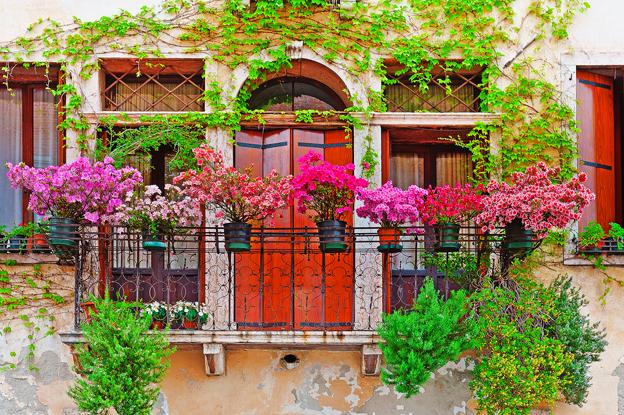Many people who purchase a house abroad are drawn by the desire to restore an older, possibly abandoned, property. But think long and hard before you choose to buy that semi-derelict farmhouse, there may be a good reason it’s standing uninhabited.
In previous articles, I have stressed the importance of hiring a professional who can do any background checks regarding what work can and cannot be done.
All building work in Italy requires planning permission, whether it’s adding a balcony to an existing property or a major restoration project. The permission you require is simple to obtain, but it’s best to leave it to the experts to organise it for you. A geometra (surveyor) can work with the comune (council) to obtain the permission needed for smaller restorations. For minimal work that has no impact on the exterior of the property, a denuncia di attività, a notice of works, may be sufficient. Applications for this must be made no later than one month before work is planned to start.
For major works including new builds and installation of swimming pools, an architect is better placed to negotiate with the comune, as you will require either permesso di costruzione, which is a building permit, or concessione edilizia, planning permission; in most major projects, you will require both.
The local comune will inform your negotiator regarding what plans and details will be required to support your application; in some cases, these may be detailed technical drawings or simply photographs of the property before the work starts.
Some council offices have a consultant architect, architetto consulente, who will be able to advise you on the regulations and any restrictions relating to your property and a conversation here could save you wasting money paying for full rebuilding permission where a simple contract of work required will suffice.
For example, when I restored my property, I was assured all I needed was a simple contract and job number, however when I decided to install an interior staircase, a different contract was required and the planning fee rose from €250 to €1,500. The increase may appear steep, but it is nothing in comparison to the fine that could have been levied for work carried out without permission, when the work was finally signed off at the council offices.
All comuni (municipalities) have a piano regolatore generale (PRG), this is a planning brief including maps detailing what uses are permitted upon the land. Before you purchase the property, it is a good idea if you are buying somewhere that requires major works to check the PRG to determine if construction is allowed and if there is any future development planned.
It is also worth noting that all sanitary work including the installation of a new bathroom or toilet must meet the Azienda Sanitaria Locale (ASL) regulations.
And finally, another thing to bear in mind is that, under Italian law, all building work is guaranteed for two-years provided any faults are reported within 60 days of the job’s completion, therefore retain all invoices and receipts for the work you have done.
And finally, enjoy the process of turning that unloved ruin into a happy holiday home.
Still in the process of looking for a house? Browse our Italian Properties for Sale section or our curated property collections.
Here's a step-by-step guide to Buying a Property in Italy: Part 1 & Part 2.
If you are at the beginning of your search, here are six things to consider before you buy a property in Italy.













